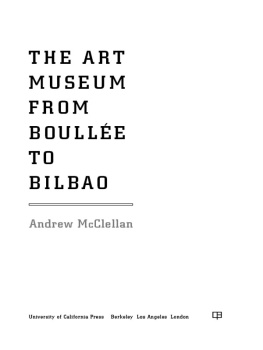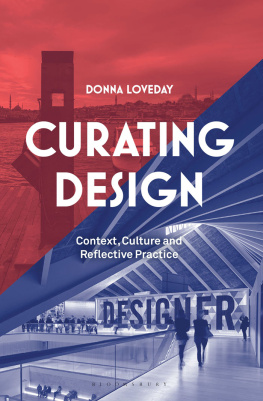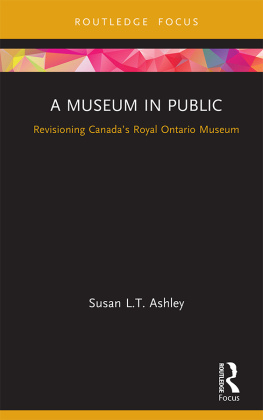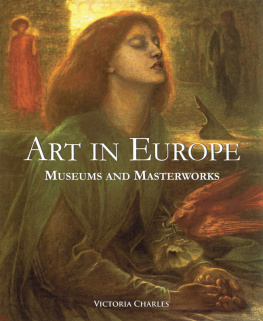ACKNOWLEDGMENTS
A book that takes so many years to write accumulates debts of gratitude that can never be adequately acknowledged. But let me start with my students. This book grew out of a course on museum history and theory I have been teaching for a long time. I would like to thank all those students who have helped me refine my thinking about art museums over the years. Of those students, one deserves special mention: Sally Anne Duncan, who wrote her doctoral thesis on Paul Sachs under my supervision. It is a clich to say students give their teachers as much as they get, but in Sally's case it is true. As an academic, I have learned most of what I know about museums from being an informed visitor who on rare occasions was also granted access to storage facilities, print rooms, conservation labs, and curatorial offices that the general public rarely sees. I count many (past and present) museum professionals among my friends, and they have helped me better understand the culture of the institution in which they work. They may take issue with some of what I say in this book, but I hope not to offend any of them. Those I would like to thank by name are Malcolm Baker, Christa Clarke, Michael Conforti, Stephen Deuchar, Adrian Ellis, Peter Funnell, Ivan Gaskell, Sarah Kianovsky, Asja Mandic, Danielle Rice, Laura Roberts, and Giles Waterfield. I have benefited enormously from the generous encouragement and brilliant work of my colleagues, fellow conference-goers, and friends in academe, particularly Jeffrey Abt, Bruce Altshuler, Stephen Bann, Tony Bennett, Chloe Chard, Fintan Cullen, Carol Duncan, Anne Higonnet, Anne Nellis, Carole Paul, Dominique Poulot, Rosamond Purcell, Katie Scott, Harriet Senie, Daniel Sherman, Alan Wallach, Martha Ward, and Richard Wrigley. At Tufts, my colleagues in the art history department were always supportive, especially Eric Rosenberg, Madeline Caviness, and Daniel Abramson, with whom I taught a most stimulating seminar on museum architecture. I would also like to remember Father Harrie Vanderstappen, an early guide to the wonders of art. The constant support of my parents has been invaluable to me. It is a pleasure to acknowledge the important financial support I received at various stages of this project from the Faculty Research Awards Committee and Tisch Faculty Fellows program at Tufts University, and the fellowship program of the Clark Art Institute, where I spent a pleasant and productive term in the company of Michael Ann Holly and the other fellows. My sincere thanks also to Stephanie Fay and the staff at UC Press for their help in the editing and production of the book. Last, I would like to thank my family, Connie, Oliver, and Jamie, for their love, company, humor, and support. Perhaps I should thank them most of all for their patience, for during our travels over the past decade I came across scarcely any museums that I did not feel compelled to visit.
APPENDIX DECLARATION ON THE IMPORTANCE AND VALUE OF UNIVERSAL MUSEUMS (2002)
The international museum community shares the conviction that illegal traffic in archaeological, artistic, and ethnic objects must be firmly discouraged. We should, however, recognize that objects acquired in earlier times must be viewed in the light of different sensitivities and values, reflective of that earlier era. The objects and monumental works that were installed decades and even centuries ago in museums throughout Europe and America were acquired under conditions that are not comparable with current ones. Over time, objects so acquiredwhether by purchase, gift, or partagehave become part of the museums that have cared for them, and by extension part of the heritage of the nations which house them. Today we are especially sensitive to the subject of a work's original context, but we should not lose sight of the fact that museums too provide a valid and valuable context for objects that were long ago displaced from their original source. The universal admiration for ancient civilizations would not be so deeply established today were it not for the influence exercised by the artifacts of these cultures, widely available to an international public in major museums. Indeed, the sculpture of classical Greece, to take but one example, is an excellent illustration of this point and of the importance of public collecting. The centuries-long history of appreciation of Greek art began in antiquity, was renewed in Renaissance Italy, and subsequently spread through the rest of Europe and to the Americas. Its accession into the collections of public museums throughout the world marked the significance of Greek sculpture for mankind as a whole and its enduring value for the contemporary world. Moreover, the distinctly Greek aesthetic of these works appears all the more strongly as the result of their being seen and studied in direct proximity to products of other great civilizations. Calls to repatriate objects that have belonged to museum collections for many years have become an important issue for museums. Although each case has to be judged individually, we should acknowledge that museums serve not just the citizens of one nation but the people of every nation. Museums are agents in the development of culture, whose mission is to foster knowledge by a continuous process of reinterpretation. Each object contributes to that process. To narrow the focus of museums whose collections are diverse and multifaceted would therefore be a disservice to all visitors.
Signed by the Directors of: The Art Institute of Chicago; Bavarian State Museum, Munich (Alte Pinakothek, Neue Pinakothek); State Museums, Berlin; Cleveland Museum of Art; J. Paul Getty Museum, Los Angeles; Solomon R. Guggenheim Museum, New York; Los Angeles County Museum of Art; Louvre Museum, Paris; The Metropolitan Museum of Art, New York; The Museum of Fine Arts, Boston; The Museum of Modern Art, New York; Opificio delle Pietre Dure, Florence; Philadelphia Museum of Art; Prado Museum, Madrid; Rijksmuseum, Amsterdam; State Hermitage Museum, St. Petersburg; Thyssen-Bornemisza Museum, Madrid; Whitney Museum of American Art, New York; The British Museum, London.
IDEALS AND MISSION
Art museums, like most institutions, are guided by ideals laid out in a statement of mission. Institutional goals vary in detail from one museum to the next, but generally art museums share a commitment to preserving the objects in their care for posterity and to making those objects available to the public. The British Museum exists to illuminate the histories of cultures, for the benefit of present and future generations, according to its Web site. Because of their role in protecting cultural memory and spreading public enlightenment, museums are viewed as important and socially benevolent institutions, worthy of community support and a charitable (tax-exempt) status.
What mission statements rarely articulate, however, is what is meant by benefit and whose artistic heritage is, or is not, collected and displayed. Who decides, and on what grounds, what qualifies as art? Social benefit is customarily defined in terms of education, but what constitutes the educational value of art? What do visitors learn on an outing to the local museum? For what purpose do art museums preserve and educate? In a recent interview, the director of the British Museum, Neil MacGregor, stated that museums today should embrace a vision of civic humanism in which the knowledge they generate is to have a civic outcome. What might that civic outcome look like?
As forward-looking institutions, museums have always been dedicated to building a better society, but visions of what constitutes it are always shifting. Consequently, museum priorities are not fixed in stone like their monolithic facades but subject to debate and modification as social needs change. Vaguely worded mission statements allow for change with no diminution of purpose. Change may appear subtle because it does not necessarily entail discarding past ideals and parts of the collection; instead, new or modified ideals are added to old, yielding a complex set of goals that aspires to serve a widening set of constituencies. For example, although multiculturalism is now broadly embraced by museums and has led to collecting initiatives in formerly marginalized visual traditions, European art has hardly been ignored. In times past, museums were considered vital to the formation of artists and were therefore built alongside art schools; those affiliations are still largely intact even though ambitious young artists no longer copy the Old Masters as their predecessors once did. Today museums are more likely to tout their role in the cognitive development of children or their economic contribution to the local community. Art museums owe their survival and success to their ability to promote new, and not-so-new, missions, depending on current needs.
Next page





